
 Introduction
Introduction
I recently lost quite a lot of weight after trying for years to stop the slide into slobdom.
The sedentary lifestyle creeps up on you when your back’s turned. Convenience food on the run, one finger push-downs on a mouse button for sporting activity, and chronic sleep shortage, along with other assorted vices… it can’t be good.
The dangers of diabetes, heart problems and simply not being able to keep up with your kids any more become manifest.
So eventually, after countless fruitless attempts (and sometimes fruit-full, depending on which nutty regime I was following), I finally found a method that worked for me.
This is my story.
You can download various high-quality versions here below:
JPG Image 800 px ~ JPG Image 1920 px ~ JPG Image 3500px
PDF Doc ~ Sab on Biggerplate!
JPG Image 800 px ~ JPG Image 1920 px ~ JPG Image 3500px
PDF Doc ~ Sab on Biggerplate!
Feel free to use my ‘How I Lost 7 Kilos In 7 Weeks’ mind map as follows:
1) For any NON-commercial use
2) Leave it EXACTLY as it is
3) Don’t change ANYTHING
4) Make sure the © Copyright text is included and intact
5) See 2) and 3) (you get the idea!)
You CAN reproduce it online or embed it in your blog or website as long as you…
6) Respect 1-5 above
7) Include a credit to ‘Sab Will / Mind Map Mad’ AND a clickable link to http://www.mindmapmad.com on the web page next to or near the image – thanks!
Anyway, it’s a place absolutely crammed with cool mind maps, including mine – he he! You can download the actual original iMindMap file (the mind mapping software I use) and play around with it yourself. Nice!
 No, actually it’s not my story. Now that would be boring!
No, actually it’s not my story. Now that would be boring!
After all, I was never grossly overweight, but the middle-age spread was growing inexorably, year after year. I was carrying around a good 15 kilos too many, I couldn’t do my trousers up and I thought, as I approached the half-century mark, that enough was enough. It was time to take the bull by the love handles and Get Things Sorted.
I won’t bore you to tears with soporific stories of failed fad diets. I’ll simply tell you what worked for me. I’m not saying it’s right or wrong. I’m not justifying it or promoting it. I don’t recommend specific companies’ products and I’m not making money from it! You can take it or leave it. With a pinch of (natural sea) salt if you wish ;-D
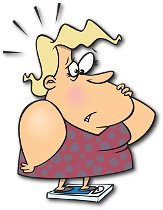 If there’s one thing I can’t stand, it’s people who think they know it all. Please don’t take me for one of those! All I’m saying here is, quite simply, what I did, as I detail in this article, resulted in pretty rapid weight-loss for me – 20 kilos in fact. I offer you this information in case it could be interesting for you or someone you know.
If there’s one thing I can’t stand, it’s people who think they know it all. Please don’t take me for one of those! All I’m saying here is, quite simply, what I did, as I detail in this article, resulted in pretty rapid weight-loss for me – 20 kilos in fact. I offer you this information in case it could be interesting for you or someone you know.
It’s a bit like mind maps actually. I like them. They work for me. You may not feel the same, and that’s fine. A health guru I ain’t by a long stretch. An avid consumer of often ridiculously contradictory and faddish healthy eating and exercising articles… I confess.
So eventually I weeded though all the nonsense and came up with… this!
a) I’m a big fan of chicken breast so I ate a ton of that. Cold, it’s easy to slam a piece in a Tupperware container along with some salad vegetables and a little pot of pure olive oil and lemon for lunch.
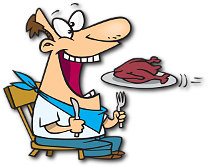 b) Tuna. I’m lucky here too, because I like it, it’s a great protein and also really easy to use in handy ring-pull cans. Get it in water, not greasy oil, whatever you do! Who knows what the oil they use actually is!
b) Tuna. I’m lucky here too, because I like it, it’s a great protein and also really easy to use in handy ring-pull cans. Get it in water, not greasy oil, whatever you do! Who knows what the oil they use actually is!
c) Other meat like lean beef and pork. Any other real meat is also fine. Obviously, better quality is… better, but in the end it’s all a good solid source of vital protein for your body.
d) Eggs are great. Just great. The thinking today is that there is no need to limit your intake and the yolk is just fantastic for you. Cholesterol, like with butter, isn’t at all what we thought it was. Public perception of it has been terribly twisted. And eggs are so versatile, taste great and the reasons go on. Scrambled or boiled (or easy-over for our American friends!)?
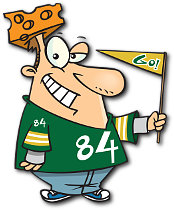 e) Don’t. Touch. My. Extra. Mature. Cheddar. Ever! Luckily, it’s full of protein and some of the fat we actually absolutely need in our diets. So cheese is ok. Phew!
e) Don’t. Touch. My. Extra. Mature. Cheddar. Ever! Luckily, it’s full of protein and some of the fat we actually absolutely need in our diets. So cheese is ok. Phew!
f) See ‘Supplements’ below for more detail on another vital protein I used: protein power (gasp!)…
a) Steamed vegetables are great and I ate a large quantity with my generous protein portion almost every day. Eat as much pure protein and steamed vegetables as you want – how about that!
b) Fresh salad is the other veggie alternative you should be scoffing down all the time. That shouldn’t surprise you I guess. Try to avoid the sweeter veggies in the first week or two, to kick your body into fat-burning mode and get a morale-boost on the scales. I mean things like tomatoes and carro ts and beetroots. But bring them right back in gradually as soon as your weight is falling – they’re too good to avoid for long. Of course, carrots are amazing steamed – much more flavour and goodness than boiled.
ts and beetroots. But bring them right back in gradually as soon as your weight is falling – they’re too good to avoid for long. Of course, carrots are amazing steamed – much more flavour and goodness than boiled.
a) It’s OK – your grandmother was right – butter is back with a bite! The current feeling is that the butter ( =cholesterol = heart attack = the devil’s food) scare was founded on complete and utter… bull. Not only that but the so-called ‘healthy’ alternative – margarine – is anything but. It’s worse. Much much worse. Which is good. Because I love melted butter on my hot steaming veggies. Don’t you?
b) Pure, cold-pressed, virgin olive oil is where it’s at. An honourable mention goes to amazing coconut oil too, but it’s a bit more expensive and has different qualities and uses. I had a tea-spoon to table-spoon-sized helping of either olive oil or butter with most meals. You’re supposed to. It actually helps you lose weight. The majority of our brain is fat. ‘Good’ cholesterol from ‘good’ fats is essential for good health. Fat helps digest protein effectively. Fat cushions our internal organs. Anorexia ain’t a good look. I’ll stop there.
 c) Go nuts (groan – Ed)! After the first couple of weeks I ate nuts all the time. A handful of almonds along with a protein shake (see ‘Supplements’ below) or a natural yogurt (with no added sugar) made a great snack or even a meal replacement. Raw nuts contain protein, good fats, roughage and no carbs – perfect! Make sure they’re raw and fresh. So avoid roasted, salted and who-knows-how-old rancid packaged versions. If you soak them overnight it’s supposed to spark off some seriously good-for-you effects. Seeds work too.
c) Go nuts (groan – Ed)! After the first couple of weeks I ate nuts all the time. A handful of almonds along with a protein shake (see ‘Supplements’ below) or a natural yogurt (with no added sugar) made a great snack or even a meal replacement. Raw nuts contain protein, good fats, roughage and no carbs – perfect! Make sure they’re raw and fresh. So avoid roasted, salted and who-knows-how-old rancid packaged versions. If you soak them overnight it’s supposed to spark off some seriously good-for-you effects. Seeds work too.
d) Dairy products. This is a whole range of stuff like yogurts, cream, cheese, milk and butter, some of which I discuss elsewhere in this article. The good news is you can get away with eating some of these, in moderation, and to be honest they are pretty good for you too. Yogurts have lots of protein and low-fat versions are, well, you know… low in, umm… fat. Watch out for added… sugar. It’s everywhere, did you know? Cream can serve as one of your important fat intakes during a meal, along with protein and vegetables, in whatever form you like. About a tablespoon is what you should be aiming at. Good fat is… ‘good’ but it’s still fat, and if you eat too much of it, guess what? You’ll stay fat! Cheese falls into the protein+fat category, so enjoy but don’t abuse.
We need carbs. Without glucose our brains would be history. Not to mention our instant energy needs like running for the bus or to catch last orders at the pub.
There’s no need to be silly about it. But the fact is, modern society has really screwed things up nutrition-wise. Carbs are everywhere. Seriously, our bodies are swimming in them, inside and out. Couple that with the fact that we’re not regularly using them up by mowing down mammoths or fleeing sabre-toothed tigers and you can see why we might end up having a surplus of the sweet guys.
 Get a few grams of high-quality, essential carbs (combined with minerals and vitamins as nature intended) from your fresh vegetables, salads and fruits (NOT fruit juices – see ‘What I Drink’ below) and leave it at that.
Get a few grams of high-quality, essential carbs (combined with minerals and vitamins as nature intended) from your fresh vegetables, salads and fruits (NOT fruit juices – see ‘What I Drink’ below) and leave it at that.
And read food labels. There are hundreds of sneaky synonyms for sugar like barley malt extract, evaporated cane juice (right…) or high-fructose corn syrup. They’re all as close to pure evil as everyday foodstuffs can get. Agave nectar, crystalline fructose, maple syrup (yep), molasses and maltose, honey and treacle (oh dear), golden syrup and maltodextrin, fruit juice concentrate, friggin’ fructose for crying out loud! OK, OK, stop already!
a) Just in case you didn’t read, or somehow skipped over the ‘Carbs’ section just above, at all costs, whatever the effort, however difficult and tempting, avoid… sugar! This is, quite simply, a time bomb in your body. And it’s EVERYWHERE. Concealed under a myriad of names. There’s science behind what I’m saying. Sugar, and especially sugar+fat together, rhymes with instant fat storage in your body. It’s as simple as that.
b) Meat which isn’t. Like cold sliced ‘meat’ from supermarkets which is actually a mash-up of… don’t ask! And patés and anything prepared – all prepared, microwave meals are off the menu! Yes, including pizza (but don’t panic – see ‘How I Celebrated & Stayed Sane’ below)! Just read the ingredients and you’ll see why. We’re going for one-ingredient foods here. You want the ingredient to be the food and vice versa. In other words, if you’re eating chicken, you want the ingredients to be… chicken! Any products with an ingredients list are probably full of crap! Don’t take my word for it – try reading the labels on a few prepared food items for yourself… and weep.
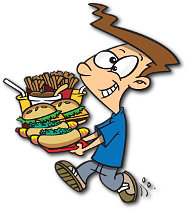 c) You’re gonna love this list… bread, pasta and potatoes. There, I’ve said it! Oh yeah! You’ve gotta dump ’em all. It’s for your own good, trust me. For a ton of reasons. The biggest one for our purposes being… carbs. Pure, unadulterated, fast-acting, fat-feeding carbs. And funnily enough, you hardly miss them when they’re gone. A big fat juicy steak with steamed green beans or broccoli dripping with real butter, sea salt and lemon (and melted cheddar, anyone?), well, tell me your mouth isn’t watering! And not a boiled spud in sight.
c) You’re gonna love this list… bread, pasta and potatoes. There, I’ve said it! Oh yeah! You’ve gotta dump ’em all. It’s for your own good, trust me. For a ton of reasons. The biggest one for our purposes being… carbs. Pure, unadulterated, fast-acting, fat-feeding carbs. And funnily enough, you hardly miss them when they’re gone. A big fat juicy steak with steamed green beans or broccoli dripping with real butter, sea salt and lemon (and melted cheddar, anyone?), well, tell me your mouth isn’t watering! And not a boiled spud in sight.
d) Beans and lentils and stuff like that – pulses – are off-bounds at the beginning because of the carbs they contain and their tricky digestibility (flatulence, anyone?). Later on, like a lot of the out-of-bounds items I mention here, including c) just above, can be reintroduced up to the point where you stop losing weight, but when trying to lose weight, just say nose.
e) Fruit. It’s funny, because most people equate fruit with god’s gift to mankind and the best thing you could possibly put into your body (Häagen-Dazs ‘Cookies & Cream’ notwithstanding). And it’s more or less true. Except that when trying to lose weight you should avoid fruit at the beginning because… it’s almost pure carbs (sugar), and you know what sugar means, right? Right. Bring back the bananas once you’ve lost your first few kilos – they’re still great!
f) Crap fat. There’s a ton of it out there. As I mentioned above, fat is now back in favour as an essential element of a healthy diet. Healthy fat, that is. But stuff like cheap vegetable oils for frying and margarine is pure, utterly adulterated nastiness, for far too many reasons to list here. Put this right next to sugar on your ‘To Don’t’ list. P.S. Do you think fast food restaurants, and all the rest for that matter, use pure, pristine, authenticated, validated, one-time-use, cold-pressed virgin olive or coconut oil at low temperatures to cook, well, practically everything, or do you think they might possibly be using and reusing revolting, rancid crap fat, back in the kitchen where nobody sees what goes on? Answers on a postcard…
g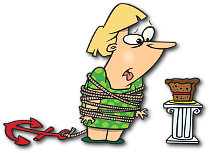 ) White and milk chocolate. OK, I’m not perfect, and chocolate is a great comforter. As well as being, apparently, really good for certain things. But there’s a ‘but’. It has to be really dark, which means more cocoa and less… hmm, did you guess? Sugar. So I often ate a few squares of dark chocolate, minimum 85% cocoa (after 90% it starts to resemble eating raw coffee granules) once I’d lost a few kilos and it didn’t seem to have a negative effect. Gave me a psychological boost, actually.
) White and milk chocolate. OK, I’m not perfect, and chocolate is a great comforter. As well as being, apparently, really good for certain things. But there’s a ‘but’. It has to be really dark, which means more cocoa and less… hmm, did you guess? Sugar. So I often ate a few squares of dark chocolate, minimum 85% cocoa (after 90% it starts to resemble eating raw coffee granules) once I’d lost a few kilos and it didn’t seem to have a negative effect. Gave me a psychological boost, actually.
 And lots of it. I tried to drink over a litre a day, and succeeded most of the time. You can count what you put in tea and with your freshly squeezed lemon juice too, but if you want to be a purist, do what I did; fill a litre or 1.5 litre bottle with mineral water when you get up and finish it by the bedtime. More, it seems, is even better.
And lots of it. I tried to drink over a litre a day, and succeeded most of the time. You can count what you put in tea and with your freshly squeezed lemon juice too, but if you want to be a purist, do what I did; fill a litre or 1.5 litre bottle with mineral water when you get up and finish it by the bedtime. More, it seems, is even better.
I couldn’t help myself. It’s a bit like cheddar cheese. But I tried to limit myself to a couple of cups a day and stop by evening in order to sleep better. Black may be better than white (see ‘Milk’ below) and fre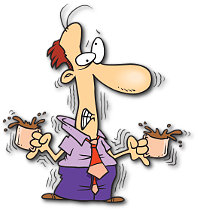 sh may be better than instant, but in the end there aren’t many calories in the stuff so I don’t bother too much about it. Oh, and sugar. Did I mention what I’ve discovered about sugar? For thoughts on sweeteners, see ‘Supplements’ below.
sh may be better than instant, but in the end there aren’t many calories in the stuff so I don’t bother too much about it. Oh, and sugar. Did I mention what I’ve discovered about sugar? For thoughts on sweeteners, see ‘Supplements’ below.
I quite like some of the fancy flavours they produce these days, but I can’t stand normal tea, which is a bit strange for a Brit coming from a nation of tea drinkers. But tea’s ok and herbal ‘tea’ is probably even better. No calories, no sugar (possibly a ‘natural’ sweetener if you must) and you’re good to go.
Part of the marketing hype for what is basically just a pinch of dried leaves or petals or peel or whatever, is to vaunt various barely believable virtues.
Some would have you bow down before the almost mythical healing powers of their banal brew, or at least suggest it will relax you or improve sleep patterns (if you don’t have to get up at 3am to pee the stuff out again). Have you ever tried tea, herbal or otherwise, with a large pinch of salt?
 Whatever, they’re often quite tasty, probably not bad for you and get more water down the hatch. All good, all good.
Whatever, they’re often quite tasty, probably not bad for you and get more water down the hatch. All good, all good.
I’ve always drunk a lot of milk, especially in coffee. For this weight-loss attempt I decided to cut down, as it contains lactose, even if fully skimmed – it’s the fat they’re skimming! And lactose is – did you guess? Sugar.
But after a few weeks of successfully getting lighter I reintroduced it, even moving to semi-skimmed for a richer taste and occasionally stealing my kid’s full-fat version if I’d run out of the lighter stuff, with no noticeable ill-effects. But I didn’t overdo it. And the fat in milk? Well, we need some fat, right?
a) Alcohol such as beer and wine. I don’t drink spirits but they fall into the same category, of course. From a purely dietary point of view, there’s a lot of sugar in beer and spirits. Maybe less in wine, so I suppose the odd glass now and then wouldn’t hurt but be sensible.
Also, booze has a certain tendency to make you justify ‘exceptions’, not only for another glass or three, but for a ‘little’ piece of cake, a few chocolate biscuits and why not just finish that 500 gram pot of Häagen-Dazs ‘Cookies & Cream’ before it’s past its sell-by date. Unfortunately, those exceptions can get out of control and in worst cases completely ruin all your previous efforts. Enough said.
 b) Fruit juice just lost its healthy glow, I’m afraid. At least for the purposes of this 7-week weight-loss freak out. It’s sugar, you see. Even taking the best case scenario where you’ve grabbed yourself some super-healthy, bio-certified, non-GMO, child-labour-free oranges and squeezed them into BPA-exorcised bottles, it’s still a mouthful of good old highly concentrated fructose you’re swigging, chum. Remember what ‘fruit juice concentrate’ is a sneaky synonym for? And sugar means cellulite, stretch marks and sniggers. And we don’t want that, do we?
b) Fruit juice just lost its healthy glow, I’m afraid. At least for the purposes of this 7-week weight-loss freak out. It’s sugar, you see. Even taking the best case scenario where you’ve grabbed yourself some super-healthy, bio-certified, non-GMO, child-labour-free oranges and squeezed them into BPA-exorcised bottles, it’s still a mouthful of good old highly concentrated fructose you’re swigging, chum. Remember what ‘fruit juice concentrate’ is a sneaky synonym for? And sugar means cellulite, stretch marks and sniggers. And we don’t want that, do we?
So lay off the fruit juice when you’re trying to lose weight. And by the way, if you see the words ‘made from concentrate’ on a carton of so-called ‘pure’ orange juice from your local supermarket, shake your head, smile sadly and be on your way. We’re talking industrial gloop, from who-knows-where, transformed who-knows-how, stored for who-knows-how-long and causing nothing but trouble to your precious insides.
If you want a fruit, eat the whole orange (no, not the peel, silly). You’ll get the natural roughage and automatically feel fuller sooner. I can easily chug down a litre of orange juice around a meal. But – oops – that’s about 450 calories coming from – double oops – around 100 grams of pure sugar. On this weight reduction plan my daily goal for all carbohydrates – including a small proportion of simple sugars like in orange juice – was only 20 grams.
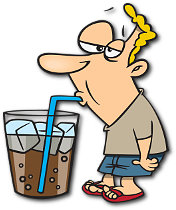 c) Fizzy, sugary or artificially sweetened ‘soft drinks’ crap. Don’t get me wrong, I’m not a hypocrite. I quite like Coke and I eat at McDonald’s or Kentucky Fried from time to time. But hey, if we’re being honest, whatever ingenious new marketing campaign they’ve dreamt up this time, it remains an honest-to-goodness carefully crafted chemical concoction not worthy of putting in our lean mean livin’ machines.
c) Fizzy, sugary or artificially sweetened ‘soft drinks’ crap. Don’t get me wrong, I’m not a hypocrite. I quite like Coke and I eat at McDonald’s or Kentucky Fried from time to time. But hey, if we’re being honest, whatever ingenious new marketing campaign they’ve dreamt up this time, it remains an honest-to-goodness carefully crafted chemical concoction not worthy of putting in our lean mean livin’ machines.
(Well-known soft-drinks company: ‘Try our new healthy version, look, it’s even get green on the label, so it must be good for you, right?’ / Fast-food chain not far from here: ‘Health-conscious? Listen – hah! We’re so health-conscious we even put the number of calories right there on our packaging, see? Oh, you didn’t coz you were too busy stuffing your faces with our disingenuously addictive dollops of gunk. Hmm, that’s what we thought would happen. Still lovin’ it? Good…’)
This is a really cool exercise technique which eliminates long, boring training sessions or running for hours on a treadmill or in the rain or on an exercise bike. And it’s good fun too. I found a programme online so I just play the video for whatever session I’m doing and follow along.
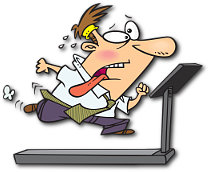 One of the principles is that you do short exercise bursts for about 20 seconds, rest for 10 seconds, do 20 more seconds, rest for 10 and so on. You do sets of various exercises like this, at the same time as the instructors in the video (so you see them sweating right along with ya!) and it’s motivating and you forget you’re exercising in fact. You’re ‘in the moment’ as often happens with sport, and before you know it, you’re done.
One of the principles is that you do short exercise bursts for about 20 seconds, rest for 10 seconds, do 20 more seconds, rest for 10 and so on. You do sets of various exercises like this, at the same time as the instructors in the video (so you see them sweating right along with ya!) and it’s motivating and you forget you’re exercising in fact. You’re ‘in the moment’ as often happens with sport, and before you know it, you’re done.
You progress through a whole series of training sessions over the weeks, starting at just a few minutes up to maybe 20, and you have the option of chaining them together if you’re feeling particularly perky.
I did them regularly, two or three times a week, and the weight flew off as the weeks flew by. If you’re interested you can get in touch and I’ll tell you the particular system I used (bought on the internet for maybe $50) but if you Google metabolic training you’ll get a whole load of possibilities.
In terms of science, the system seems to have a lot going for it – the principles seem pretty solid – but I’m not qualified to go into the details. Suffice it to say that I was convinced to give it a try and I like it! What’s even better is that you don’t need any equipment. You can do it in your bedroom or living room or garage (like me) or wherever. And by adding some inexpensive items like a stretchy rubber band you can extend what you can do even more.
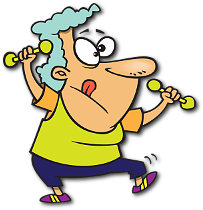 A bit random really, but as I was trawling through all the online ads I came across this. Or it was sent to me through some mailing list I subscribed to, whatever. Anyway, I had this series of abs training videos which took a nice, refreshing approach, were easy to do and finally slotted in perfectly as a ‘finisher’ to my above-mentioned metabolic training sessions, bumping them up to half an hour or so.
A bit random really, but as I was trawling through all the online ads I came across this. Or it was sent to me through some mailing list I subscribed to, whatever. Anyway, I had this series of abs training videos which took a nice, refreshing approach, were easy to do and finally slotted in perfectly as a ‘finisher’ to my above-mentioned metabolic training sessions, bumping them up to half an hour or so.
You might want to do like me or find your own alternatives, of which there are an infinite number. As the metabolic sessions are relatively short you can combine them with another form of exercise or just leave it at that.
The main thing is to get off your backside and do something a bit physically challenging. Anything. After all, you’re training your body, through diet, to burn fat as its go-to energy source rather than carbs, so why not turbo-boost the process by getting your body to actively need some extra energy? By working out. You know it makes sense.
I did some weight-training too. Not in a gym because it’s a real hassle to pack the bag, get there, get changed, interact with random others, and then, finally, when you’re all revved up and raring to go… wait 5 minutes for the machine you want to use. Not to mention the price.
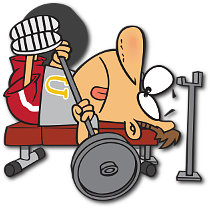 So I invested in a nifty set of weights which are interchangeable. In other words, with one handle I can very quickly attach whatever weight I need for a particular exercise. And storage-wise, they take up precisely the space of… two large dumbbells. There are a few different companies which produce these, so check them out online. Or get in touch and I’ll tell you which ones I use which I’m very happy with.
So I invested in a nifty set of weights which are interchangeable. In other words, with one handle I can very quickly attach whatever weight I need for a particular exercise. And storage-wise, they take up precisely the space of… two large dumbbells. There are a few different companies which produce these, so check them out online. Or get in touch and I’ll tell you which ones I use which I’m very happy with.
I do weight training because it is recognised as a very good way to keep in shape. I’m not going to go into detail on something you probably already know. What I will do is encourage you to give it a go because with a simple set of weights in your garage or wherever you can get a really good strength workout to keep those muscles looking good as the weight comes off.
In an ideal world I alternated days of metabolic training and abs with weights days. In reality it was hard to do that but I did my best and managed at least four or five sessions a week on average.
However, I reckon that diet was responsible for about 80% of my weight-loss although there must be a synergistic effect so that number’s pretty fluid. What I mean is, if the exercise helped me lose, say, 2 kilos, and the diet helped me lose 6 kilos, working together they probably helped me lose 10 kilos. Hand in hand. I don’t recommend any other way.
Cardio. Long, slow, boring cardio.
That’s not quite true actually. The long slow boring bit – I took that from memory from the metabolic guy’s marketing blurb. I actually quite like a particular form of cardio – running through the woods near where I live. I feel good as I do it and it helps me relax mentally and recharge spiritually.
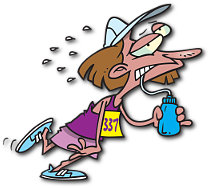 Unfortunately, just as I was starting my weight-loss efforts, I pulled a hamstring doing an unwise movement (thanks nutty training idea No.73) so couldn’t run any more. Which is why I gave the metabolic stuff a serious go.
Unfortunately, just as I was starting my weight-loss efforts, I pulled a hamstring doing an unwise movement (thanks nutty training idea No.73) so couldn’t run any more. Which is why I gave the metabolic stuff a serious go.
But the fact is that there is mounting evidence to suggest that traditional cardio – sweating it out for hours on end – is practically useless for… weight-loss. Or at least for getting rid of fat whilst still maintaining a good, fit, reasonably muscular body.
The anecdote is: compare a typical marathon runner’s physique with that of a top sprinter. Chalk and cheddar. The former’s a scrawny little whelp next to the latter’s bodybuilder-like proportions. The examples are exaggerated of course, but if I had to choose which one I’d prefer to look like, it would be the track athlete any day. Who doesn’t spend countless hours slogging away running 100s of miserable kilometres a month in training.
The point isn’t that the marathon runner doesn’t have low fat. He most certainly does. But what a price to pay for it, plus the lack of overall muscle development plus the long-term damage to his knees, plus… another worrying thing:
 The heart. They used to say that long-distance running gave you an immensely strong heart. It’s a muscle, so train it, use it, push it, and it’ll get stronger.
The heart. They used to say that long-distance running gave you an immensely strong heart. It’s a muscle, so train it, use it, push it, and it’ll get stronger.
Only there’s another argument that not only are long distance runners potentially wearing out a the vital organ through overuse, but that the heart was never meant to be used for long, sustained and strenuous effort in the first place.
Going back to the mammoths and the sabre-toothed tigers, we’d either be violently running after them or away from them respectively, in very short bursts, but never actually just running for running’s sake, mile after lonely mile…
You decide, or read about it online, but it’s an interesting question in any case.
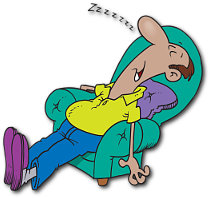 I tried to get into a rhythm of going to bed and getting up at the same time each day. It wasn’t always possible of course, but even just trying and succeeding sometimes was better than not trying at all.
I tried to get into a rhythm of going to bed and getting up at the same time each day. It wasn’t always possible of course, but even just trying and succeeding sometimes was better than not trying at all.
The fact was that my sleep had become highly erratic; sometimes I would go to bed at 11.30 and sometimes at 2 in the morning if I couldn’t stop working on something or surfing the web. Not good for my physical wellness or for anything else to do with family sanity or amicable relationships.
In other words, I tried to get at least seven and a half hours’ sleep a night. I even optimistically made a little chart and stuck it to the fridge showing me at what time I had to go to bed in order to get up at such and such a time and still get my seven and a half hours kip. I can dream! But again, having thought it out, at least the idea of getting to bed and staying there for a reasonable length of time was anchored somewhere in my subconscious brain and probably helped me get better sleep overall.
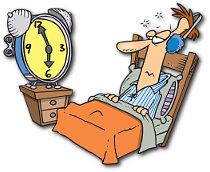 Not to mention the fact that about 10 million web pages all say that sleep is essential for good health on many different levels. Yes, including weight-loss. You lose weight as you sleep, or at least facilitate it. It’s a bit technical and counter-intuitive (where does it go?), but it’s true. Less regular quality sleep equals less effective weight-loss. And you feel crap too. Good enough for me.
Not to mention the fact that about 10 million web pages all say that sleep is essential for good health on many different levels. Yes, including weight-loss. You lose weight as you sleep, or at least facilitate it. It’s a bit technical and counter-intuitive (where does it go?), but it’s true. Less regular quality sleep equals less effective weight-loss. And you feel crap too. Good enough for me.
And talking of crap, let’s quickly mention another lucrative fad: the ‘detox’ industry. By that I mean all and any products or persons who try to convince you that what you really need is a good ‘detox’. And whaddya know, they have just the product/system/supplement/ouija board to help you do it, all at a very reasonable price, considering the advanced techniques being employed.
We’re talking crap here, remember? And it just so happens that the body is rather good at ‘detoxing’ itself, all on its little ownsome. Ever heard of the toilet paper industry?
a) Coffee. How I’d love to say I avoided coffee. You’re supposed to, of course. Stop mid-afternoon, they say, and you’ll sleep much better. And I’m sure they’re right. But I found it hard to do and also couldn’t notice much difference in my sleep patterns whether I drank coffee or not. Caffeine is supposed to help weight-loss too, so who knows what the best thing to do is. Do what fits in OK with what seems sensible to you. That’s the best I can do on that one.
 b) Checking e-mail just before bedtime. Ho ho ho. And other fairy tales. OK, again, there’s a ton of health sites and life-optimisation blogs out there that would kill me for questioning this one, and I’m sure they’re right. Switch off all screens two hours before going to bed. Blot out all visible light, including tiny glowing alarm clock LEDs. Light incense, breathe deeply, sing Hare Krishna and be thankful for everything bad that didn’t happen today.
b) Checking e-mail just before bedtime. Ho ho ho. And other fairy tales. OK, again, there’s a ton of health sites and life-optimisation blogs out there that would kill me for questioning this one, and I’m sure they’re right. Switch off all screens two hours before going to bed. Blot out all visible light, including tiny glowing alarm clock LEDs. Light incense, breathe deeply, sing Hare Krishna and be thankful for everything bad that didn’t happen today.
That’s all great. Seriously. But if it doesn’t work for you, don’t fret it. I just love that moment when I finally hit the sheets for another night, hopefully not too late. Do what’s right for you (having carefully considered the options). I think I’ll make that my mantra.
I’ve used the word ‘supplement’ here to mean anything that isn’t ‘natural’. In other words you can’t find the thing growing on trees or coming out of the ground or swimming in the seas or flying or running around. So if it’s a pill or a tablet or a capsule or a powder or even an ‘elixir’ (whatever) I will consider it a supplement. But that’s just my categorisation attempt; it is what it is, read on…
The supplements industry is HUGE. And with hugeness comes huge profits and huge amounts of hyperbole. There probably isn’t a single business which is quite so full of pure, unadulterated, raw, untreated, toxic, stinking… hyperbole as the supplements industry.
 Many many supplements don’t work. Or would only work in very specific and highly unlikely, idealised situations. Or in conjunction with many other nutrients or factors from which it is extremely difficult to determine what actually causes what.
Many many supplements don’t work. Or would only work in very specific and highly unlikely, idealised situations. Or in conjunction with many other nutrients or factors from which it is extremely difficult to determine what actually causes what.
A lot of supplements ‘work’ because people who like ‘the idea’ of them or pay a lot of money for them or have made a business out of promoting them say they do. Homeopathy is a good example, as are Bach’s flower ‘remedies’ or any number of esoteric and anecdotal cures or snake oils for an equally wide range of ailments, real or imagined…
Some supplements do work, of course, and are sold by reputable companies with the highest ethics, enviable quality standards and the rest. However, the good tend to get tarnished by the less good and the downright ugly. Even highly reputable companies still get caught peddling doubtful dreams through a fuzzy mesh of smoke and mirrors.
If I’m going to invest a lot of money in something and test it on my own body, then I want to be pretty sure it’s likely to have a positive effect based on what I’m trying to achieve.
Which is why I limited this section to very few items, despite the intense pressure to dispense large sums on a bewildering array of possibilities, all promising to help me in my battle of the bulge. Here’s what I chose.
I reckoned this would be a pretty safe bet. After all, we all need vitamins, right? Yeeesss. But.
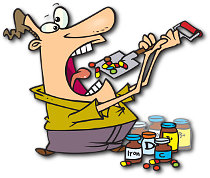 …but in fact, if you eat a good balanced diet, as you will be if you eat what I’m talking about here, you shouldn’t actually need them.
…but in fact, if you eat a good balanced diet, as you will be if you eat what I’m talking about here, you shouldn’t actually need them.
…but there’s a real argument that denatured or ‘artificial’ vitamins and minerals don’t work well (or at all) when not in their original state surrounded by their natural chums, like in an orange, for example.
…but what control do you, the consumer, actually have over the manufacturing processes employed by huge multinationals or dodgy little outfits in a backstreet in Taiwan? How can you tell whether you are actually getting what you are paying (a lot) for? Even if it doesn’t work. How do you know you’re not swallowing soap or sawdust? Or simply sugar (in homeopathy’s case, you do know – brush your teeth afterwards)?
Digressing a bit, I read an interesting article recently on how to ‘create’ this year’s crazy miracle health fad. You ‘discover’ (or invent) some exotic sounding berry or root or leaf, preferably originating from a country a long way away (from your potential dupes). 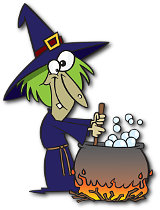 Now you can legitimately employ powerful emotional trigger words like ‘exotic’, ‘ancient’, ‘unknown’, ‘secret’, ‘hidden’ and the like. A ‘long-lost tribe’ would be a nice embellishment, one that, let’s see, yes, has used this particular earth-shaking discovery for millenia and as a result has an incredible _____ (fill in miracle property here – life expectancy, IQ, penis girth, etc.).
Now you can legitimately employ powerful emotional trigger words like ‘exotic’, ‘ancient’, ‘unknown’, ‘secret’, ‘hidden’ and the like. A ‘long-lost tribe’ would be a nice embellishment, one that, let’s see, yes, has used this particular earth-shaking discovery for millenia and as a result has an incredible _____ (fill in miracle property here – life expectancy, IQ, penis girth, etc.).
One of the benefits of pitching something from ‘far away’ is that it is very difficult for anyone to actually check up on them. Although these days all you have to do is type, I don’t know, ‘acai berry scam’ into Google and have a slightly horrified laugh at some of the shit going down. And guess what? It’s happening in a friendly local health food store near you, right now. Today. Maybe even in your food cupboard. Go take a look just in case.
So, to cut a long story short, I took a multivitamin pill each day. It probably didn’t do any harm. Maybe it had an effect. It didn’t cost much. So that’s my multivitamin thoughts for what they’re worth.
This one seems to be pretty solid. If you can get the good stuff, then it will probably be really good for you. Look up why online.
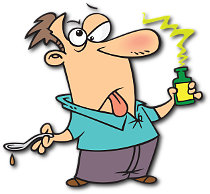 Of course, there are all the usual problems, or problems manufacturers try to brainwash you with, suggesting that while omega 3 is an excellent idea, not just any old omega 3, oh no! Then follows a host of reasons why their O3 is great and their competitors’ O3 stinks. Well, most of it stinks (fish oil and that), but you know what I mean.
Of course, there are all the usual problems, or problems manufacturers try to brainwash you with, suggesting that while omega 3 is an excellent idea, not just any old omega 3, oh no! Then follows a host of reasons why their O3 is great and their competitors’ O3 stinks. Well, most of it stinks (fish oil and that), but you know what I mean.
So anyway, I did the only thing I could, having bought into the idea it was worth trying. I chose what seemed like a good company for various reasons and started taking it. One of its extolled virtues is that it helps you lose weight. I hope it does something good. I’m still here, if that’s any reassurance.
Ah, now this is a funny one. Why did I take magnesium? A bit for the same reason as man climbs Everest. Because it’s there.
There was this bottle of pills hanging around from some former life, various people said it was useful, including my doctor and my partner, so I thought I’d finish them off. The pills, that is. No more and no less. It’s supposed to help you have more energy, and boy, did I need that with a five-year-old on the rampage…
A lot of bodybuilders take protein powder, along with a huge number of other dubious substances, in order to get bigger. But that wasn’t my reason.
Although it comes in a variety of huge fluorescent pots and tubs with pictures of muscular monsters on the front, in the end it’s just protein. Like… eggs, or beef, for example. So you can consider it pretty much as a food. And protein is one of the foods you should be eating with every meal.
Getting the solid stuff down, though, can be logistically challenging. You can’t just whip out a can of tuna or a hard-boiled egg or chicken breast anywhere. So when travelling or during the working day, a protein shake is the ideal option.
If you have a sealable plastic container and a water source, you can just put the dry powder in it before you go out, and then mix the shake and consume whenever you like in a couple of seconds.
The powder comes in some standard flavours like vanilla, chocolate, strawberry and banana, and it tastes pretty good.
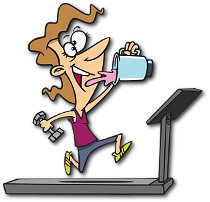 You might think that to make it palatable, they’d have used dodgy ingredients and sugar of course. And this is sometimes the case. So you need to choose carefully. You want very low carbohydrate/sugar content with high quality, high volume protein content.
You might think that to make it palatable, they’d have used dodgy ingredients and sugar of course. And this is sometimes the case. So you need to choose carefully. You want very low carbohydrate/sugar content with high quality, high volume protein content.
To make it taste more interesting I added a couple of drops of essential oil (that stuff’s wicked!) – peppermint or orange – to the shake and it was really delicious. As I mentioned earlier, I got into the habit of eating a handful of raw almonds with my shake – very nice indeed, and which also adds the fat you need to digest the protein properly. A piece of fruit goes perfectly with the shake too – an apple or banana for example – later when you’re already losing weight, not at the beginning ‘because carbs’.
I found a local (French) online supplier that ticked all the right boxes – good value, ethical-sounding, high quality, information-rich web site, lively user’s forum, efficient service… – and went with them. I’d recommend you do the same. Or possibly go to a fitness store near you for specific advice and the personal touch.
Be very wary of big supermarket chains selling protein powder. It’s a bit like dog food or any other specialist product; they may have dirt cheap prices and own brands, but you might be eating… dirt. Go for quality, after all, it will become your new body!
I did use sweeteners in my coffee, but tried to avoid the ones getting terrible press – aspartame and sucralose and saccharin and the delicious-sounding acesulfame potassium or ace-K. They all have cute ‘n’ cuddly brand names of course, like Sweet’N 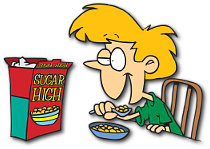 Low, Nutrasweet and Splenda, but they’re all a very dodgy bunch of chemicals, far from ‘natural’ and apart from anything else being linked to increased cravings for junk food coz you’re not getting the nutrients you’re supposed to be getting from ingesting proper food. Oh yes, and cancer scares. How about that for an added benefit from your sugar reduction campaign?
Low, Nutrasweet and Splenda, but they’re all a very dodgy bunch of chemicals, far from ‘natural’ and apart from anything else being linked to increased cravings for junk food coz you’re not getting the nutrients you’re supposed to be getting from ingesting proper food. Oh yes, and cancer scares. How about that for an added benefit from your sugar reduction campaign?
A lot’s been said about a sweet plant called stevia which is supposed to be a better alternative to the above sweeteners, but again you have to be careful. Now that the word ‘stevia’ is ultra-trendy, everyone’s slapping it on their labels at the very limits of what’s allowed by the trade descriptions act, when in fact there may be very little actual ‘stevia’ in the product. Like 1%, bulked out by the usual suspects mentioned above. Caveat emptor, and all that.
During my online forages, I came across a curious product, known variously as green powder, super greens, power greens or variations on that theme. You get this big darkened glass jar containing this pungent green stuff smelling fairly strongly of seaweed mixed with who-knows-what.
It’s supposed to be a concentration of ‘nature’s goodness’, basically a powdered-down concoction of many tens of theoretically good-for-you land and sea veggies and assorted organisms.
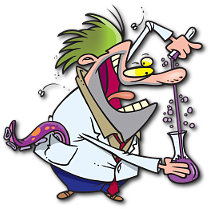 I went/fell for it, and it’s ok. You can mix it with water or fruit juice (kinda strong – like drinking grass?) or put it in your on-the-go drink as I ended up doing. It actually went pretty well with my chocolate/peppermint shake and I felt smug thinking it was all good stuff I was downing.
I went/fell for it, and it’s ok. You can mix it with water or fruit juice (kinda strong – like drinking grass?) or put it in your on-the-go drink as I ended up doing. It actually went pretty well with my chocolate/peppermint shake and I felt smug thinking it was all good stuff I was downing.
Whether it does any good or not is debatable, but I don’t think it’s bad for you and if you believe about 5% of the marketing hype, it could actually be very positive for your well-being. Among other things, it’s supposed to make your daily multivitamin pill redundant and you can eat as much as you can stomach (the more the better, say the manufacturers…) because, after all, it’s just ‘food’ – i.e. dried, powdered veggies, herbs and seaweed. Try it if you like, but it’s a bit expensive and probably not essential for losing weight if you do the rest of the stuff I mention here. There could be a slight synergistic effect though.
All the rest. You might think that’s already too much. Or maybe you wouldn’t take the magnesium or the greens powder, but you would go for a ‘fat-burner’ pill or a mega vitamin C dose, or even your favourite homeopathic sugar pill – oops, no sugar, sorry!
But in the end what made sense to me was a high-quality multivitamin of some sort just in case, ditto for the omega 3, and the protein powder as a very practical way of getting enough protein into your body on a regular basis. One of the problems with rapid weight-loss I haven’t mentioned is that in many cases with extreme diets, you lose weight, sure. But what are you losing? Water and muscle. And just a bit of fat. Not good at all.
 That’s why you want to take a lot of protein and do physical exercise as you change your eating habits. To preserve the muscle. Thanks to the lack of carbohydrates you’re not taking in, the body will swap over to burning fat, both ingested and residual (i.e. what you eat and what you’re lugging around) and the flab will drop off as you tone up the muscles underneath. That’s what you want.
That’s why you want to take a lot of protein and do physical exercise as you change your eating habits. To preserve the muscle. Thanks to the lack of carbohydrates you’re not taking in, the body will swap over to burning fat, both ingested and residual (i.e. what you eat and what you’re lugging around) and the flab will drop off as you tone up the muscles underneath. That’s what you want.
And one final reminder to drink lots of water. A very common complain/excuse for not losing weight is that the body is ‘retaining water’. Well, contrary to common belief, if you drink more water, you don’t swell up like a balloon. The body effectively says, well, looks like that high-quality liquid I crave (Note: NOT Coke ‘Lite’ or Saint Emilion ’69) is in plentiful supply – no need to hang on to what I’ve got then. And it’ll drain itself of the excess water as it isn’t worried about when the next time it’ll get some will be. So drink up. I believe herbal tea and adding fresh lemon juice count too, so it doesn’t have to be completely flavourless. So much the better.
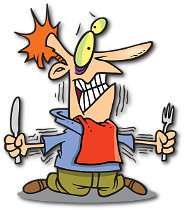 As I near the end of this longer-than-planned article, you may (or may not) be wondering, yes, but how on earth am I going to have the will-power, the discipline to stick with it. Well, the answer is simple. You have what is commonly known as a ‘cheat day’.
As I near the end of this longer-than-planned article, you may (or may not) be wondering, yes, but how on earth am I going to have the will-power, the discipline to stick with it. Well, the answer is simple. You have what is commonly known as a ‘cheat day’.
This sounds a bit negative, so you might want to rename it a ‘reward day’ or a ‘recharge day’. You basically pick a day of the week, and eat, within reason, anything you like. Give it a catchy name that will please your beleaguered brain, like ‘Sunday is Funday!’
That doesn’t mean you eat a litre of Häagen-Dazs at a sitting (you wish!) but a couple of scoops is absolutely fine.
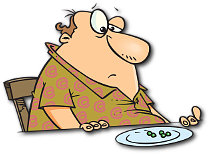 So have desert. Eat pizza in front of the telly. Go to McDonald’s. No problem.
So have desert. Eat pizza in front of the telly. Go to McDonald’s. No problem.
And why is it no problem? Well, for a couple of reasons.
Firstly, the danger of not having a more relaxed eating day from time to time is that you would simply go nuts (in a bad way), crack, binge and give up. This is very real – it’s why most people fail to lose weight and end up on dangerous weight-loss-gain-loss-gain rollercoasters.
But if you have a ‘funday’ where you can indulge in some of your favourite foods, you will look forward to it and be motivated not to crack in the meantime.
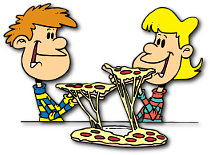 Secondly, a lot of sources talk about an actual physical benefit of having this ‘day off’ which will result in more weight-loss than if you didn’t do it.
Secondly, a lot of sources talk about an actual physical benefit of having this ‘day off’ which will result in more weight-loss than if you didn’t do it.
What happens is that when you restrict calories, or certain types of calories (like sugar) which the body is very used to receiving, it panics. It thinks you’re starving, and starvation is often followed by imminent death. Luckily for us, actually, the body is far ‘cleverer’ than we are at protecting itself. So it calls on some extremely sophisticated devices to ensure its survival.
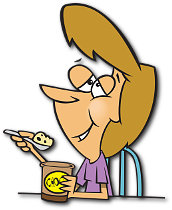 One of these techniques involves changing the way it works so it expends far fewer calories for energy when it thinks its very existence in danger. What does this mean? You stop losing weight, or you succumb to your cravings, despite your best efforts. Damn! And you were doing so well…
One of these techniques involves changing the way it works so it expends far fewer calories for energy when it thinks its very existence in danger. What does this mean? You stop losing weight, or you succumb to your cravings, despite your best efforts. Damn! And you were doing so well…
But here’s where our cheat day comes in. If, once a week, you take in a heap more calories than usual, a bit like with the water mentioned in ‘What I Drank’ above, it says, ok, food’s not in short supply after all, and it goes on losing weight just like before, or even faster!
In my case, with my daily morning weigh-in, I would, admittedly, see up to a kilo’s increase in weight on the Monday morning after my Sunday Funday blowout. But on the Tuesday, after a high-quality Monday back on the good-eating regime, I would lose one and a half kilos. Bam!
 So DO have a day when you eat what you want – it’s not just recommended but essential! Don’t go absolutely crazy and eat a week’s worth of calories in one day. There’s no point and it wouldn’t even be very pleasurable. Above all you are trying to lose weight, so don’t sabotage all your good efforts during the week, but relax and enjoy an ‘anything goes’ meal with friends or family. Then get right back on track the next day and have fun watching the scales go up… and then wayyy down again.
So DO have a day when you eat what you want – it’s not just recommended but essential! Don’t go absolutely crazy and eat a week’s worth of calories in one day. There’s no point and it wouldn’t even be very pleasurable. Above all you are trying to lose weight, so don’t sabotage all your good efforts during the week, but relax and enjoy an ‘anything goes’ meal with friends or family. Then get right back on track the next day and have fun watching the scales go up… and then wayyy down again.
The same goes for exercise, by the way. For goodness sake don’t do sport every day, and have a day off between sessions if you’re just starting off. Your body will thank you for it and the benefits will be multiplied, you’ll see.
To finish with, I’d like to quickly say something about the more psychological, emotional and practical side of the process.
There’s not much mention so far of the fact that losing weight can be really hard. But it wasn’t that hard for me, actually, once I got into it. There came a point at the end 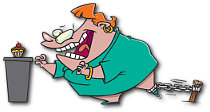 when I wasn’t really doing anything much differently and had almost forgotten I was on a new diet and was still losing almost a kilo a week.
when I wasn’t really doing anything much differently and had almost forgotten I was on a new diet and was still losing almost a kilo a week.
Nor have I talked about the challenges of trying to fit early morning exercise sessions in between getting the kids to school and catching the train to work. Or mustering the energy to do sport in the evening when you’re tired, there’s a good programme on the TV and the family is clamouring for your time and attention.
Not to mention weird changes in shopping and eating routines. If your folks aren’t fully behind your efforts things can get tricky.
Something I found really helped was two things actually. 1) Have a plan. 2) Note down what you do each day.
The plan can be as simple as wanting to lose seven kilos in seven weeks. Or 14 in 14, it doesn’t matter. It can also include menus and exercise routines and timings for when you’ll do them.
 I tended to find ‘simple’ worked best for me. For example, I either had a protein shake and almonds in the morning or an omlette with maybe tuna in it and a tomato. Day in, day out. Later, when I was losing weight and could up the quality carbs a bit, I got to love porridge oats with a scoop of chocolate or vanilla protein power, some sesame seeds and raisins mixed in, made quickly in the microwave with milk and water in 2 minutes flat, and topped with sliced banana or apple. Yum.
I tended to find ‘simple’ worked best for me. For example, I either had a protein shake and almonds in the morning or an omlette with maybe tuna in it and a tomato. Day in, day out. Later, when I was losing weight and could up the quality carbs a bit, I got to love porridge oats with a scoop of chocolate or vanilla protein power, some sesame seeds and raisins mixed in, made quickly in the microwave with milk and water in 2 minutes flat, and topped with sliced banana or apple. Yum.
My day always started with a luke warm glass of water and half a squeezed lemon, along with my multivitamin and omega 3 capsules. Religiously. Say a little prayer of thanks to the day for being such a glorious one to if you feel like it! (If today isn’t glorious, which one’s going to be?)
I exercised first thing in the morning, for half an hour, when everyone else was still in bed. I got it out of the way, started the day fantastically, set the body on a fat-burning course for the next few hours (that’s true, you know!), and to top it all off, felt great.
 I’d have my little Tupperware container with my tuna or chicken breast and some fresh salad and olive oil/lemon dressing for lunch.
I’d have my little Tupperware container with my tuna or chicken breast and some fresh salad and olive oil/lemon dressing for lunch.
The protein shake was always there for a light or on-the-move lunch alternative or as a high quality snack if I was feeling peckish.
Dinner would invariably be a good chunk of some sort of protein – meat, fish or eggs generally, with steamed vegetables and salad, and butter or olive oil and lemon or vinegar as a dressing. I discovered cottage cheese here in France and used that a lot too as a good protein source. It’s great in salads and all sorts.
The second part of the simple process to keep you on track is to note down everything you eat and drink, the exercise you do, the sleep you get and the weight you lose, every day.
It’s easy, and motivating. And you can see where you’re making good progress and where you have to rethink your approach.
All you need is a little notebook or use your smartphone if you prefer.
 Jot down everything quickly after each meal or training session. It will become second nature, I promise you, and you’ll feel proud and pleased when you see your progress diary filling out and your clothes getting looser as a consequence.
Jot down everything quickly after each meal or training session. It will become second nature, I promise you, and you’ll feel proud and pleased when you see your progress diary filling out and your clothes getting looser as a consequence.
Find a nice record system that works for you, but I recommend something bright and a bit fun. It’s supposed to be an exciting period of positive change in your life, so celebrate it with lively colours and images if you can.
Of course, you’re reading this on a mind mapping blog, so it would be remiss if I didn’t suggest using a mind map to track your progress. I’m creating one for that very purpose, to go with this article, in fact.
I’ll put it right here as a download when it’s ready, which should be in the next couple of days as I write this on 20 May, 2015. So come back very shortly and it’ll be here, ok? Cool.
 And that about wraps things up. Well done if you’ve made it through to the end of this article. That in itself is an achievement. This is pretty much a first draft, so if you’d like to see anything else included or presented differently or have any other useful comments, then I’d love for you to get in touch.
And that about wraps things up. Well done if you’ve made it through to the end of this article. That in itself is an achievement. This is pretty much a first draft, so if you’d like to see anything else included or presented differently or have any other useful comments, then I’d love for you to get in touch.
Above all, let me know if you use some of these ideas and how it works out for you. As I said right at the beginning, this was supposed to be a simple description of what worked for me. In the end I had to put in some of the reasons why I think it was successful and I hope I didn’t come across as preaching at any point. But with progress comes passion, and that’s what I feel when I’m writing about something I’m really interested in. I hope some of that rubs off on you and you can attack your weight-loss like a boss!
So I wish you the very best of luck getting rid of that pesky excess weight. Let me know how it goes!
© 2015 Sab Will / Mind Map Mad
 Mind Map Mad Facebook Group
Mind Map Mad Facebook Group
If you’d like to join our friendly mind map discussion group on Facebook to learn more about mind mapping and submit your own creations, then you’re welcome!
Just click the button below and join up straight away – I look forward to meeting you there 😀
Here are those download links again, and don’t forget to let me know what you think (or leave a comment below). Did my ‘How I Lost 7 Kilos In 7 Weeks’ mind map make sense and did it help you lose some weight yourself? How did you adapt it to fit your personal situation? Over to you!
JPG Image 800 px ~ JPG Image 1920 px ~ JPG Image 3500px
PDF Doc ~ Sab on Biggerplate!
JPG Image 1920 px ~ JPG Image 3500px ~ PDF Doc ~ Sab on Biggerplate!
Feel free to use my ‘How I Lost 7 Kilos In 7 Weeks’ mind map and weekly record mind map as follows:
1) For any NON-commercial use
2) Leave it EXACTLY as it is
3) Don’t change ANYTHING
4) Make sure the © Copyright… text is included and intact
5) See 2) and 3) (you get the idea!)
You CAN reproduce it online or embed it in your blog or website as long as you…
6) Respect 1-5 above
7) Include a credit to ‘Sab Will / Mind Map Mad’ AND a clickable link to http://www.mindmapmad.com on the web page next to or near the image – thanks!
Anyway, it’s a place absolutely crammed with cool mind maps, including mine – he he! You can download the actual original iMindMap file (the mind mapping software I use) and play around with it yourself. Nice!
Leave a Reply
You must be logged in to post a comment.